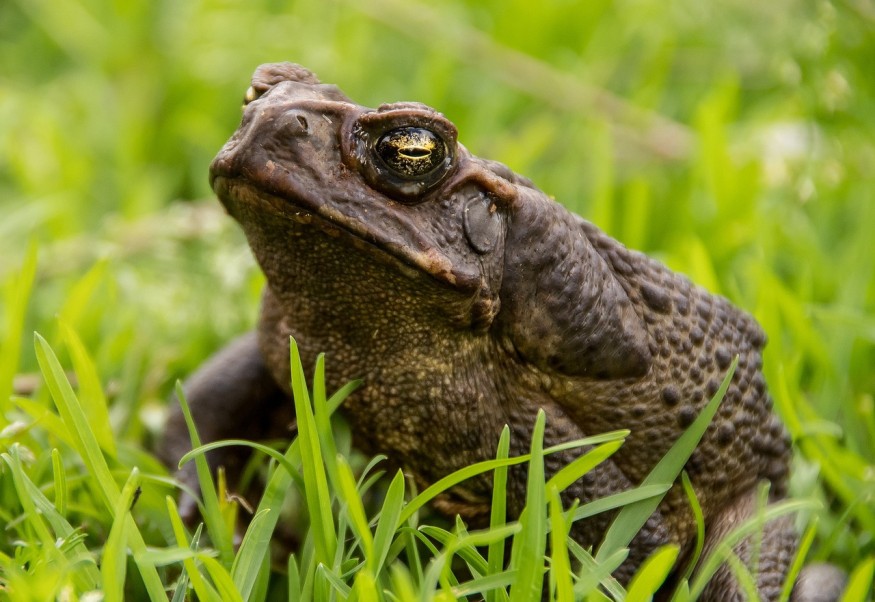Toadzilla, a giant cane toad dubbed by Queensland rangers with such a name while conducting track work in Conway National Park, near Airlie Beach. The rangers were shocked to find the monster toad beside the Conway Circuit last week.
Toadzilla, World's Largest Toad

Ranger Kylee Gray stated a snake slithering through the track forced the rangers to stop heir vehicle and that is when Gray stepped out and saw the monster cane toad, according to a statement by Queensland Government - Department of Environment and Science.
Gray said the team reached and grabbed the cane toad, placing it into a container so it could be removed from the wild. The ranger adds that a large cane toad will eat anything it can fit into its mouth, including insects, reptiles, and small mammals, as cited by the Department of Environment and Science.
The rangers believe that the giant crane toad is a female since female cane toads can grow larger than their male counterparts. The caught specimen weighed at 2.7 kilograms, which could become a new record and compete against a prior Guinness World Records cane toad holder weighing 2.65 kilograms.
The previous cane toad record holder was set in March 1991 which was own by a Swedish man.
Being a threat to biodiversity, a statement from the Queensland Government department said the giant toad was "humanely euthanized" due to the risk of environmental damage, as cited by NBC News.
What is a Cane Toad?
The cane toad (Rhinella marina), also known as the marine toad or giant neotropical toad, is a large terrestrial amphibian native to South and mainland Central America.
The Queensland department outlined the following cane toad fast facts:
- Cane toads were introduced to the state of Queensland in 1935 to control the population of cane beetle, a pest targeting sugar cane plantations
- Cane toads have been recognized by the Commonwealth Government as a threat to Australia's wildlife under the national Environmental Biodiversity and Conservation Act 1999
- Female cane toads can produce eggs approximately up to 30,000 in a season
- Cane toads colonize a wide range of natural habitats
- Cane toads are lethally poisonous to wildlife and were responsible for local extinctions of some of their predators, including the northern quoll or the northern Australian native cat
- Cane toads are known for competing with native species on food resources and sheltering sites
- Cane toads mainly prey on insects but they can also eat on small vertebrates, including small mammals
Cane toads belong to the family Bufonidae, order Anura, and phylum Chordata. These marine toads has a lifespan of approximately 10 to 15 years in the wild. The amphibians which has a color often brown covered with large warts can grow up to 10.2 inches long and weigh up to 2.5 kilograms. However, the said Australian state department said cane toads of this size are rare.
© 2025 NatureWorldNews.com All rights reserved. Do not reproduce without permission.





